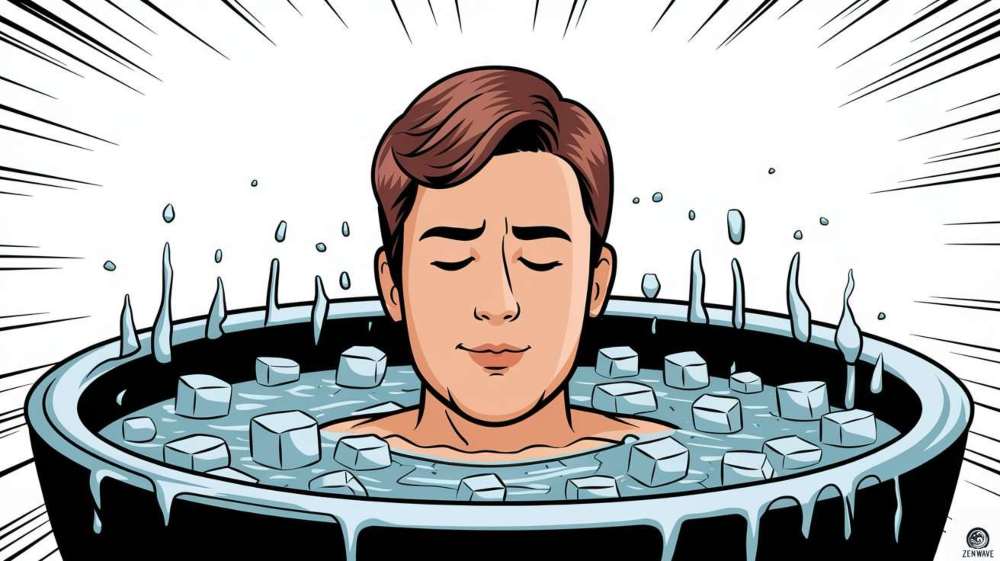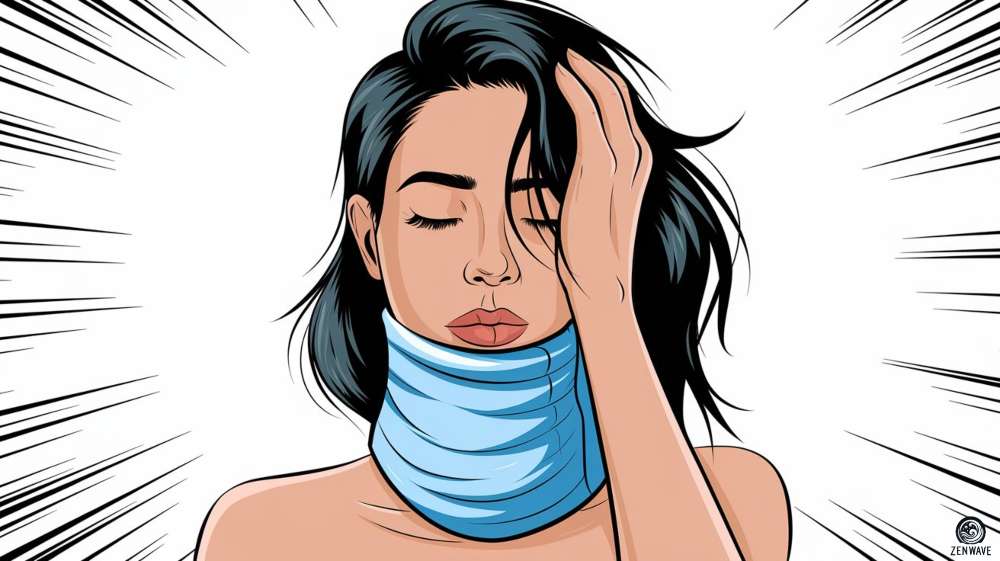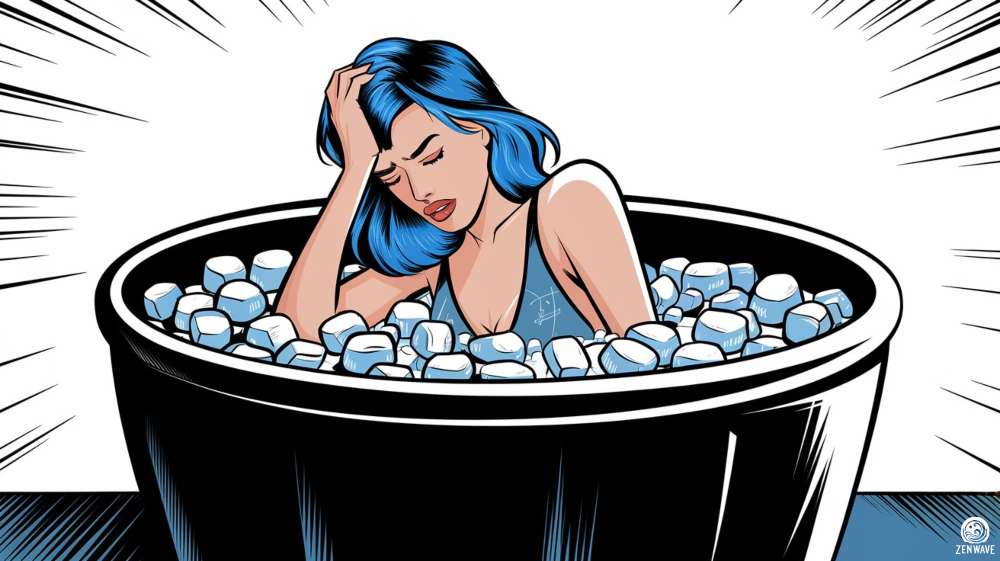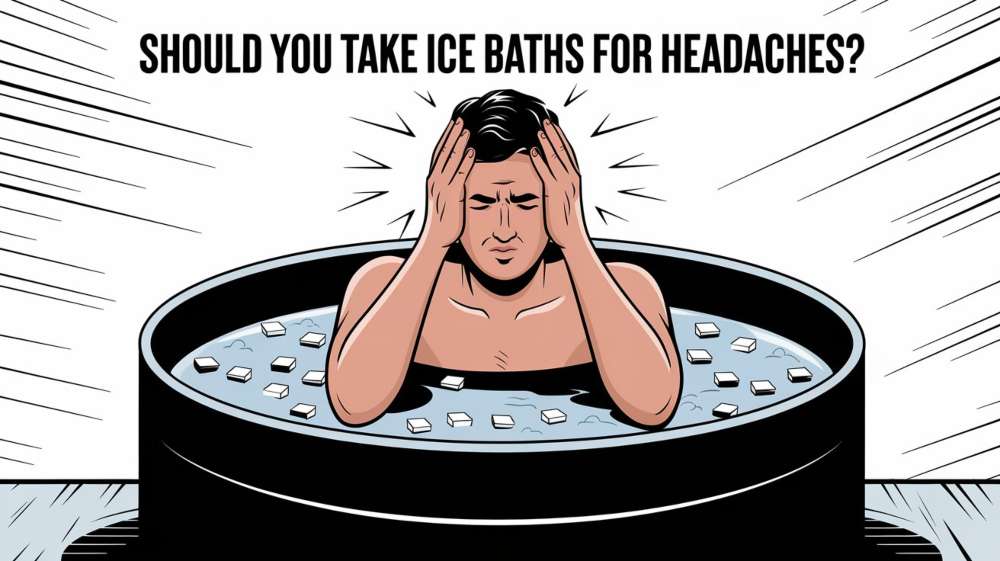Headaches are a common problem that affects millions of people. Cold therapy is often used to treat some types of headaches, but can ice baths help?
Headaches come in different forms. Some people get tension headaches from stress, while others suffer from severe migraines. These can greatly impact daily life, making it hard to work or enjoy activities. As people look for natural ways to feel better, ice baths and cold therapy can be a viable option for relief.
In this article, we’ll explore how ice baths and cold therapy help with headaches. We’ll look at the science behind cold therapy and its effects on the body. Whether you often get headaches or are just curious about new treatments, let’s dive into the world of ice baths and headache relief.
Benefits of Ice Baths for Headaches

Ice baths might help with different types of headaches as many studies have shown that immediate cold intervention has been shown to be effective for different types of headaches. Here are some examples of the benefits of ice baths for different types of headaches and migraines.
1. Migraine Relief
Cold therapy may offer relief for migraine sufferers in two key ways. First, cooling can cause blood vessels to constrict, which might ease the throbbing pain often associated with migraines. This vasoconstriction effect can be particularly helpful since migraines are often linked to dilated blood vessels. Second, the cold creates a numbing effect that could reduce overall pain sensation. This numbing might provide a welcome respite for those experiencing the severe pain typical of migraines.
2. Tension Headache Help
For tension headaches, cooling could be beneficial by addressing both physical and mental factors. Cold can help relax tense muscles, particularly in the neck and shoulders, which are often culprits in tension headaches. As these muscles loosen, the headache pain may decrease. Additionally, the stress-reducing effects of cold therapy might indirectly help with tension headaches. Since stress is a common trigger for this type of headache, the calming effect of cooling could potentially prevent or alleviate tension headaches.
3. Cluster Headache Management
While there’s less research on cold therapy for cluster headaches, it might still offer some relief. The primary benefit could come from the anti-inflammatory effects of cooling. Cluster headaches involve inflammation of blood vessels in the brain, so reducing overall body inflammation might help decrease the severity of these headaches. However, more studies are needed to fully understand the impact of cold therapy on cluster headaches.
4. Improved Sleep Patterns
Regular exposure to cold might play a role in preventing headaches overall. One way is by improving sleep quality. Better sleep often means fewer headaches, and cold therapy has been linked to improved sleep patterns. Additionally, by reducing overall body inflammation, cooling could potentially lower the frequency of inflammation-related headaches. This general anti-inflammatory effect might help create an environment in the body that’s less conducive to headache development.
5. Reduced Stress Over Time
For headaches, the most promising benefits of ice baths is improving your overall stress resilience. This could help prevent common stress-induced headaches by making your body better at handling everyday stressors. So, even if ice baths don’t directly relieve your headache, they might help reduce their frequency over time.
6. Improved Blood Flow
After the initial constriction, blood vessels dilate, potentially improving overall circulation. Better blood flow might help prevent some types of headaches.
It’s important to remember that while these benefits are possible, they may not work the same way for everyone. Some people might find great relief, while others might not notice much difference. As with any treatment, it’s best to talk to a doctor before trying ice baths specifically for headaches, especially if you have any related health conditions.
Best Cold Therapy Methods For Headaches

Finding relief from headaches is a complicated thing and the effectiveness of cold therapy methods can vary drastically from person to person. While ice baths might help with headaches in some cases, there are other cold therapy options that currently have been better studied for consistent results. These methods might be easier or more comfortable for some people than a full ice bath.
1. Targeted Neck Cooling: Scientists did a careful research on this method in a randomized trial. They used a special wrap with two ice packs that go on the neck, right where big blood vessels (called carotid arteries) are. This significantly reduced migraine pain for many people. The wrap is adjustable, so it’s also easy to use.
2. Whole Head Cold Caps: Another study looked at a frozen gel cap that covers the whole head. After wearing it for just 25 minutes, people reported much less migraine pain. The result of this study showed cold gel cap application may be effective by itself in some patients suffering from migraines.
3. Intraoral Cooling: An interesting study on cooling of the jawbone showed this to be an effective method for relief. The researchers tested this on 50 people who came to the emergency room with bad headaches. They used this cold therapy method for 20 minutes. Many people in the study felt less pain after this treatment. Some even felt better for hours afterward.
Among these methods, the targeted neck cooling seems to work best especially for migraines. The study on this was very well-designed, which makes the results more reliable. However, it’s important to remember that what works for one person might not work for another.
A big review of many studies found that cold therapies generally help reduce migraine pain quickly – within 30 minutes. These studies point to ice baths for the face to be the best option versus whole body immersion.
In the end, the best method depends on the person. You might need to try different cold therapies to see what helps you most. Always talk to your doctor before trying new treatments, especially if you get severe headaches.
Risks of Ice Baths for Headaches and Migraines

While full body ice baths might help some people with headaches, they’re not without risks. Here are some things to consider:
- Worsening Symptoms: For some people, extreme cold can actually trigger headaches or migraines. If you’re sensitive to temperature changes, an ice bath might make your headache worse instead of better.
- Skin Sensitivity: The cold can irritate your skin, especially if you have sensitive skin or conditions like Raynaud’s syndrome.
- Dizziness or Fainting: The shock of cold water can cause a sudden drop in blood pressure, which might lead to dizziness or fainting. This can be dangerous if you’re already dealing with a migraine.
- Interaction with Medications: If you’re taking medications for migraines, the effects of an ice bath might interfere with how these drugs work in your body.
Remember, while ice baths might provide relief for some, they’re not a cure-all for headaches or migraines.
Final Thoughts
Cold therapy shows promise for headache relief, but remember that results vary from person to person. While full-body ice baths might build stress resilience, targeted methods like neck cooling or cold caps often prove more effective for headaches and have more research backing them up.
If you’re curious about cold therapy only for headaches, start small. Try cold packs or brief cold showers before diving into full ice baths.
For those interested in further exploring cold water therapy at home, a deidcated ice bath tub like our Zenwave Ice Pod offer an affordable entry point. This portable ice bath allows you to try cold immersion safely and conveniently, potentially helping with headaches and offering other health benefits.
As research continues, we may discover more targeted cold treatments for headaches. In the meantime, listen to your body, prioritize safety, and stay hopeful. With persistence and professional guidance, you can find an effective headache relief strategy that works for you.

